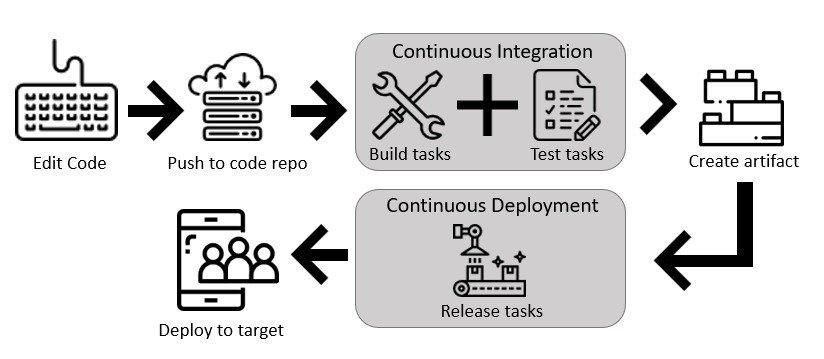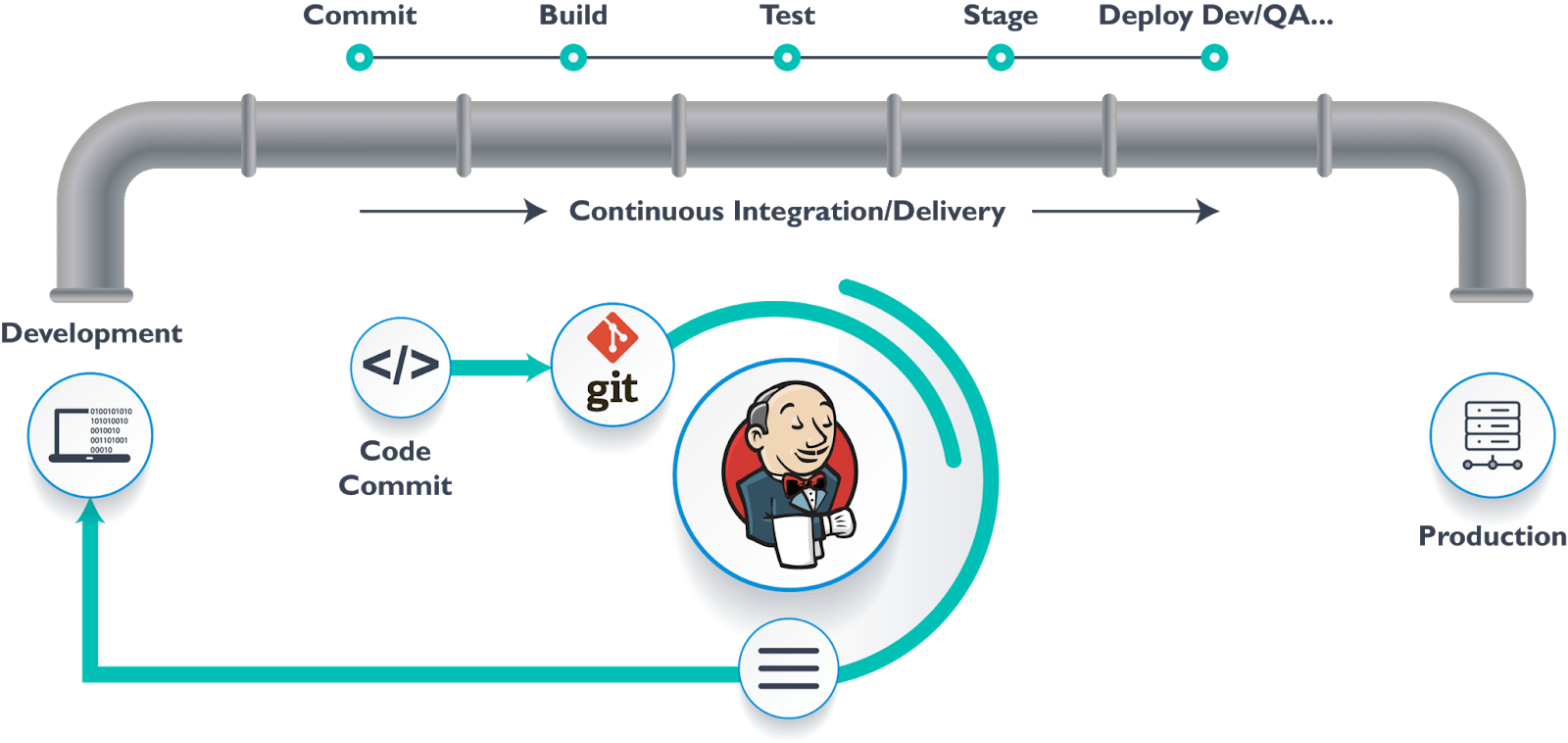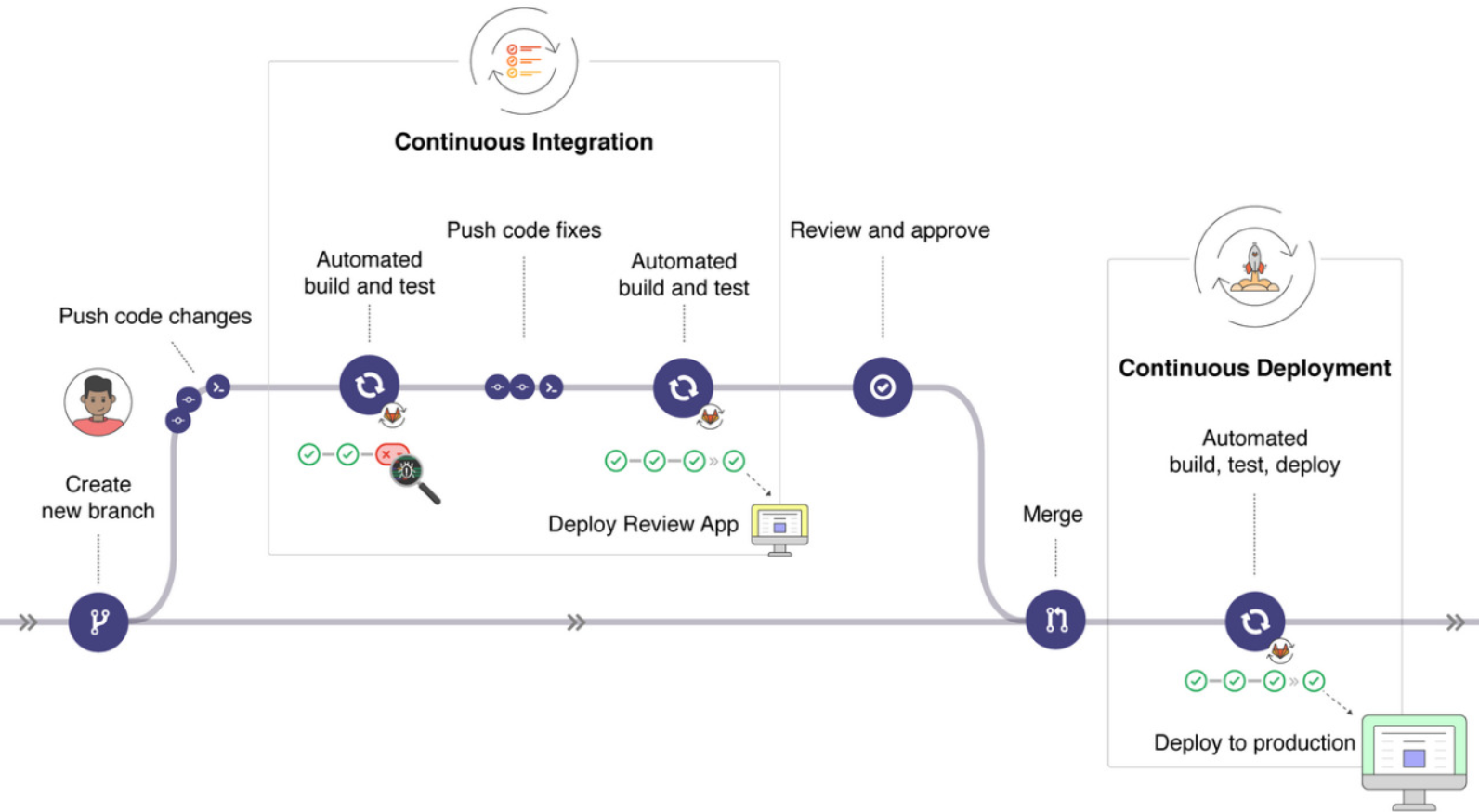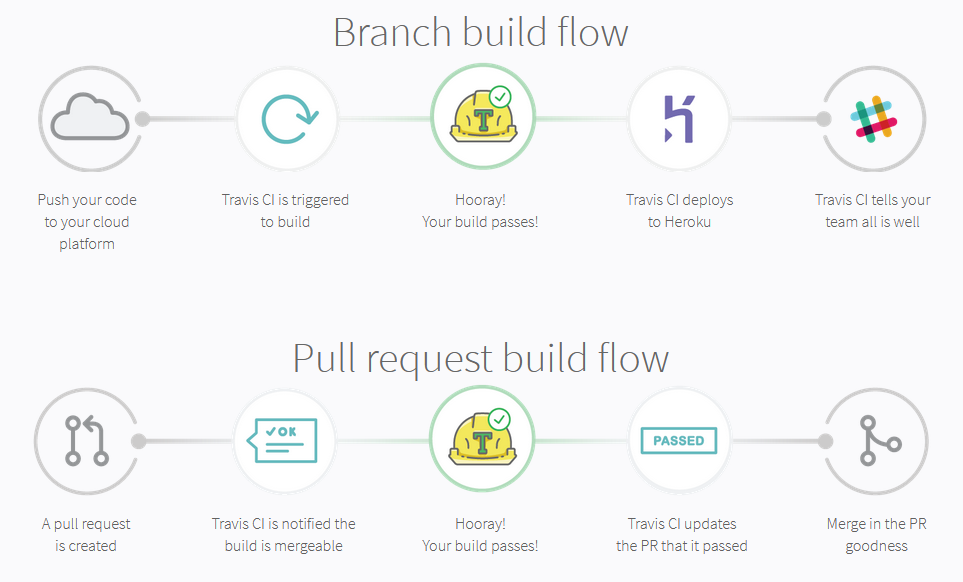Five Tools for Continuous Integration and Delivery with DevOps
We have heard the term DevOps and its meaning hundreds of times. However, in a more generalized sense, DevOps is an operational culture that aims to develop, integrate, and deliver services continuously through better communication and collaboration between developers and operations teams.
Due to the accelerated growth of cloud computing platforms, the need to implement DevOps has increased. As we know, thanks to this process, it is possible to meet the business requirements of projects agilely, delivering a product more securely and quickly.
Whether you are just learning about DevOps or looking to improve your current processes, we want to let you know our opinion about the tools we have used throughout the projects within the company, hoping we will help you decide which may be the best one to implement on your team.
Before learning about various CI/CD implementation tools, let us briefly understand these concepts.
What is CI/CD?
The acronym CI stands for “Continuous Integration” and CD for “Continuous Delivery/Deployment.” Thus, it is a continuous integration deployed within software projects to unify the portion of the developers and the infrastructure generated by the operations team, which helps improve the developed product's delivery time.
Why implement CI/CD in our projects?
With reduced development cycles, we can automate and monitor the software creation process, including integration, testing, product deployment, and administration, increasing the frequency of deployments and delivering constant value to the end user.
In conclusion, CI/CD incorporates continuous automation and control throughout the application lifecycle.

CI/CD Tools
Several tools on the market can help us implement continuous integration and deployment:
- Jenkins
- Travis CI
- AWS
- Azure DevOps
- GitLab
AWS CodePipeline
AWS CodePipeline is a fully managed continuous delivery service that enables you to automate release pipelines for fast, reliable application and infrastructure updates.
AWS CodePipeline uses other tools to complement the full development of the DevOps process, such as AWS CodeCommit, AWS CodeBuild, AWS CodeDeploy, and AWS CodeStar. They all work in an integrated manner to ensure a complete automation process.

AWS CodePipeline
AWS CodePipeline offers one free active pipeline per month as part of the AWS Free Tier. Additional charges may be incurred for storing and accessing Amazon S3 artifacts and triggering actions from other AWS and third-party products connecting to active pipelines.
Azure Pipelines
Azure Pipelines is a cloud service that combines continuous integration and continuous delivery to build and test our code automatically to make it eventually available to other users.
If we are going to work on public projects, Azure Pipelines is free. The opposite happens with private projects; although you can run up to 1,800 minutes (30 hours) for free per month, expenses are incurred beyond this limit.

Jenkins
Jenkins is the best-known continuous integration tool on the market. It was developed in Java and is compatible with multiple version control systems.
Being open source allows us to have it locally by simply meeting certain specifications on our machines and at the same time, we can set it up in production environments.

Jenkins DevOps
Jenkins is an open-source automation server widely used in the DevOps space. It's not exclusively a DevOps tool, but it excels at automating many of the tasks involved in the DevOps lifecycle.
Jenkins automates various stages in the software development lifecycle, freeing developers and operations staff to focus on higher-level tasks. When it comes to CI/CD Pipeline Management, Jenkins helps create pipelines that automate the building, testing, and deployment of software in a continuous loop.
GitLab CI/CD
GitLab CI is a service included in GitLab, which builds and tests software every time a developer updates the repository.
The GitLab Suite includes GitLab CD, which takes care of continuous deployment. After the integration is completed through GitLab CI, you can run continuous deployment to update the changes within the product already in production.
Points that describe the use of GitLab CI/CD:
Easy to learn and use. It is scalable.
Fastest system that can be used for code deployment and development.
It allows project team members to integrate their work daily so that integration errors can be easily identified through an automated build.

Travis CI
It is a free-of-charge cloud platform that works for public GitHub and BitBucket repositories. This tool offers many automated continuous integration options that eliminate the need for a dedicated server, allowing testing in various environments on multiple machines and running on different operating systems.
Travis is an open-source tool, but it also has a business plan that substantially improves the services already provided in the free version.

Travis CI DevOps
Tool comparison table
Finally, we share with you a comparison analysis of what each tool can offer you:
|
Jenkins |
Travis |
AWS |
Azure Pipelines |
Gitlab CI |
|
Pipeline setup through Jenkinsfile |
Pipeline setup through yml files |
Pipeline setup through a yml file or graphic interface (GUI) |
Pipeline setup through a YAML file or classic editor (GUI) |
Pipeline setup through a yml file |
|
Multiple pipeline executions at the same time |
Open-source version with up to 5 pipelines at the same time |
One pipeline execution at a time |
One pipeline execution at a time |
Multiple pipeline executions at the same time |
|
Compatible with multiple version control systems |
Particularly compatible with GitHub and BitBucket |
Compatible with GitHub, GitHub Enterprise, BitBucket but prioritizes AWS CodeCommit |
Compatible with various version control systems but prioritizes Azure Repos |
Has its own version control system |
|
Open source; thus, completely free |
Provides a free layer with limitations; if exceeded, incurs expenses |
Provides a free layer with limitations; if exceeded, incurs expenses |
Provides a free layer with limitations; if exceeded, incurs expenses |
Provides a free layer with limitations; if exceeded, incurs expenses |
Each project is diverse in its needs, but there are dozens of tools that will allow you to optimize your automation process most conveniently and optimally.
We hope that the information provided here has allowed you to learn about our top 5 tools and that you feel curious to continue learning about them.
Share this
You May Also Like
These Related Stories

A Deep Dive into API Economy Strategies Driven by AWS

What Is an API, and How Does It Benefit Your Business?

New Business Models in Banking: How to Innovate through APIs?
Subscribe to
Pragma Blog
You will receive a monthly selection of our content on Digital Transformation.
